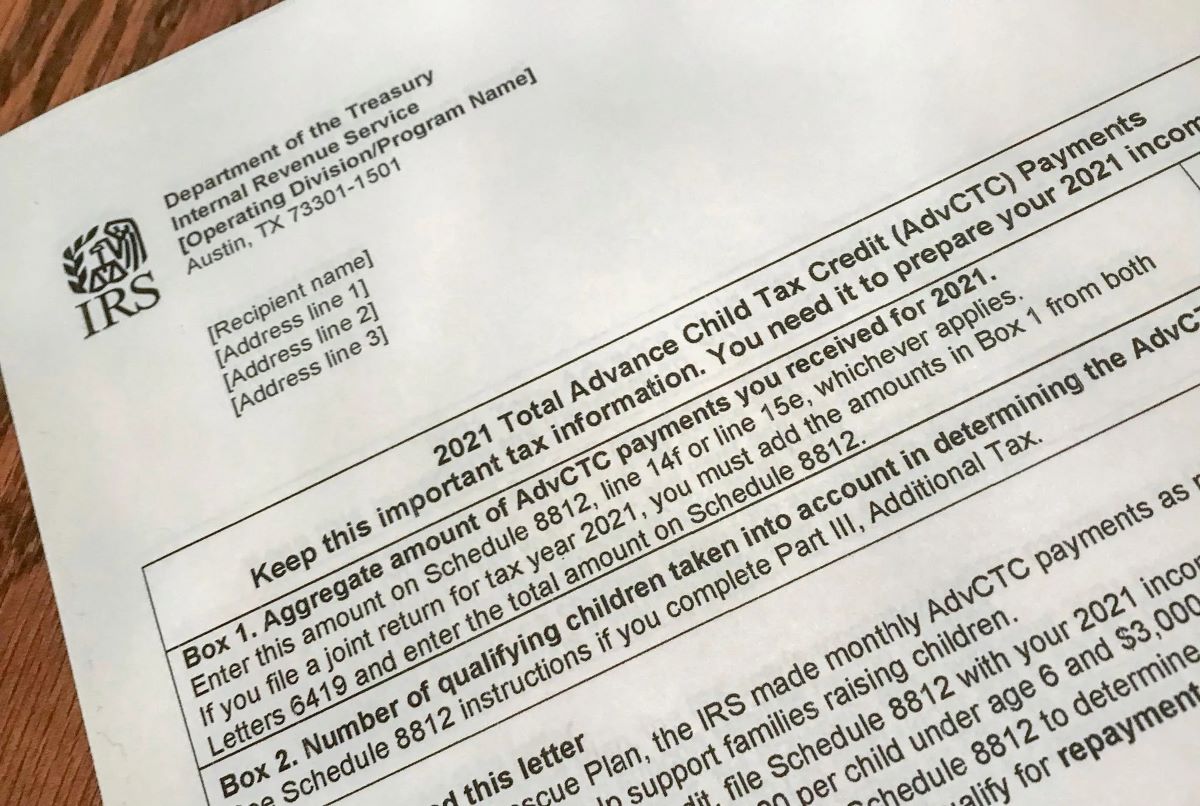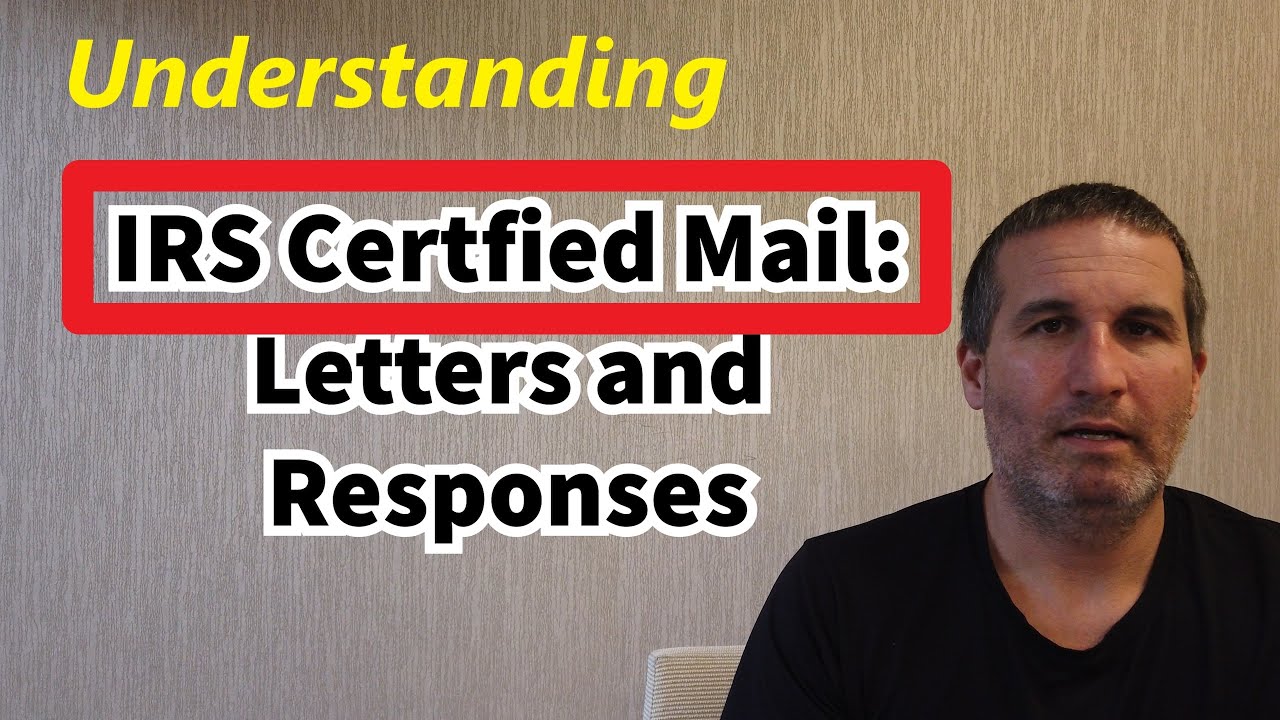Home>Finance>What Happens If The IRS Sends A Refund To A Closed Bank Account?


Finance
What Happens If The IRS Sends A Refund To A Closed Bank Account?
Published: October 31, 2023
If the IRS sends a refund to a closed bank account, you may face challenges in accessing your money. Learn what happens and how to resolve this issue to manage your finances effectively.
(Many of the links in this article redirect to a specific reviewed product. Your purchase of these products through affiliate links helps to generate commission for LiveWell, at no extra cost. Learn more)
Table of Contents
Introduction
Receiving a tax refund from the Internal Revenue Service (IRS) is often a welcomed financial boost for many individuals and families. However, what happens if the IRS sends a refund to a closed bank account? This can lead to confusion, frustration, and potential financial complications.
In this article, we will explore the process of receiving an IRS refund and the potential issues that can arise when the refund is sent to a closed bank account. We will also provide steps to take if you find yourself in this situation and offer tips on preventing future occurrences.
The IRS refund process typically involves taxpayers filing their annual tax returns and providing their bank account details for direct deposit. Once the return is processed, and if a refund is owed, the IRS attempts to deposit the funds into the provided bank account.
However, sometimes circumstances change, and taxpayers may close their bank accounts without notifying the IRS. This can happen for various reasons, such as switching banks or experiencing financial difficulties. In such cases, the IRS may inadvertently send the refund to the closed bank account.
If you find yourself in this predicament, it is essential to understand the steps you can take to rectify the situation and ensure you receive your refund in a timely manner. Let’s delve deeper into what happens when the IRS sends a refund to a closed bank account and how to handle it.
Understanding the IRS Refund Process
Before diving into what happens when the IRS sends a refund to a closed bank account, it’s important to understand the overall process of receiving an IRS refund.
Once taxpayers file their annual tax returns and the IRS processes them, calculations are made to determine whether a refund is owed. If a refund is due, the IRS initiates the refund process, often through direct deposit.
Direct deposit is a convenient and efficient way for taxpayers to receive their refunds. Taxpayers can provide their bank account details to the IRS, allowing the refund amount to be electronically transferred to their account. This process significantly speeds up the refund delivery, typically taking only a few days compared to several weeks for paper checks.
It’s crucial to ensure that the bank account information provided to the IRS is accurate and up to date. Any changes, such as closing a bank account, should be promptly communicated to the IRS to avoid potential complications.
If the IRS encounters an issue, such as an invalid bank account number or a closed account, they will attempt to notify the taxpayer via mail. However, if the notification does not reach the taxpayer in time, the refund might already be sent to the closed account.
Understanding this process is essential to navigate the potential challenges that may arise if a refund is sent to a closed bank account. In the following section, we will discuss what happens in such scenarios and the steps you can take to resolve the issue.
What Happens When the IRS Sends a Refund to a Closed Bank Account?
When the IRS sends a refund to a closed bank account, several things can happen depending on the specific circumstances. Here are some potential scenarios:
- Automatic account closure: In some cases, if the bank account has been closed for an extended period, the IRS system may detect the closure before sending the refund. In this situation, the refund will not be processed, and the IRS will typically send a paper check to the taxpayer’s address on file.
- Account reopening: In certain instances, a closed bank account may be reopened by the bank if the IRS attempts to deposit funds into it. This can happen if the account closure was recent and the bank has not yet updated their records. If the account reopens, the funds will be deposited, although this scenario is relatively rare.
- Rejection and return: If the IRS discovers that a refund has been sent to a closed bank account, the financial institution will reject the deposit. The rejected funds will then be returned to the IRS. In such cases, the taxpayer will need to take additional steps to update their bank account information and request a reissue of the refund.
- Delayed processing: In some situations, the IRS may be unable to process the refund immediately after the rejection and return. This delay can occur if the taxpayer’s return is flagged for potential fraud or if there are other issues that require manual review. In such cases, the taxpayer may experience a longer wait time to receive their refund.
It’s important to note that each situation can vary, and the exact outcome may depend on factors such as the timing of the account closure, the responsiveness of the bank, and any other potential issues with the taxpayer’s return.
If you find yourself in a situation where the IRS has sent a refund to a closed bank account, it’s crucial to take prompt action to resolve the issue and receive your refund. In the next section, we will outline the steps you can take to rectify the situation.
Steps to Take When Your IRS Refund is Sent to a Closed Bank Account
Discovering that your IRS refund has been sent to a closed bank account can be frustrating, but there are steps you can take to resolve the issue. Follow these steps to increase your chances of receiving your refund:
- 1. Contact your bank: Reach out to your bank immediately and inform them of the situation. Explain that the IRS has attempted to deposit funds into your closed account. They may be able to provide guidance on how to proceed and whether it is possible to reopen the account temporarily to facilitate the refund deposit.
- 2. Update your bank account information with the IRS: If your bank is unable to reopen the closed account, you will need to update your bank account information with the IRS. You can do this by contacting the IRS directly or by utilizing their online tools, such as the “Where’s My Refund?” feature on the IRS website. Provide your new bank account details to ensure the refund can be reissued.
- 3. Request a refund trace: If a significant amount of time has passed, and you have not received your refund after updating your bank account information, you can submit a refund trace request with the IRS. This request prompts the IRS to investigate the status of your refund and provides an opportunity for them to reissue the funds.
- 4. Be prepared for potential delays: It’s important to understand that resolving issues with a refund sent to a closed bank account can take time. The IRS may need to manually review your case, especially if there are additional issues with your return. Be patient and prepared for potential delays in receiving your refund.
- 5. Consider seeking professional assistance: If you are encountering difficulties in resolving the issue on your own, you may want to consider seeking help from a tax professional or an IRS representative. They can navigate the process and provide guidance tailored to your specific situation.
By taking these steps, you can increase the likelihood of successfully recovering your refund, even if it was initially sent to a closed bank account. Remember to keep all documentation and correspondence related to the issue for future reference.
Contacting the IRS for Assistance
If you find yourself in a situation where the IRS has sent your refund to a closed bank account, it’s essential to reach out to them for assistance. The IRS has dedicated resources to help taxpayers resolve issues related to refund deposits. Here are some steps to take when contacting the IRS for assistance:
- 1. Utilize online tools: Start by visiting the official IRS website. They have various online tools and resources available to help taxpayers, including the “Where’s My Refund?” feature. This tool allows you to track the status of your refund and provides instructions on how to update your bank account information.
- 2. Contact the IRS directly: If you are unable to resolve the issue through online tools, consider contacting the IRS directly. The best contact method will depend on your specific situation. You can reach out to the IRS by phone, mail, or even in person at a local IRS office. Be prepared to provide your tax return information, Social Security number, and any relevant documentation regarding the closed bank account.
- 3. Seek assistance from a tax professional: If you are unsure of the appropriate steps to take or are facing challenges in resolving the issue, consider seeking help from a tax professional. They have experience dealing with the IRS and can provide guidance specific to your situation. They can assist with contacting the IRS on your behalf and ensure your case receives the attention it needs.
- 4. Be patient and persistent: Resolving issues with the IRS may require time and persistence. It’s crucial to remain patient throughout the process and follow up on any correspondence or requests for information. Keep records of all communication, including dates, names of representatives spoken to, and any reference numbers provided.
When interacting with the IRS, it’s important to maintain a polite and professional demeanor. The IRS employees are there to assist you, and treating them with respect can go a long way in resolving your issue. Be prepared to provide any necessary documentation and follow any instructions given to ensure a smooth resolution.
Remember, each case is unique, and the specific steps and requirements may vary. By contacting the IRS and seeking their assistance, you increase your chances of successfully resolving the issue and receiving your refund in a timely manner.
How to Prevent Refunds Being Sent to Closed Bank Accounts in the Future
While it can be challenging to anticipate changes in your banking situation, there are steps you can take to minimize the risk of having your IRS refund sent to a closed bank account in the future. Here are some preventive measures to consider:
- 1. Keep your bank account information updated: Whenever you change your bank account, ensure that you promptly update your information with the IRS. This can be done by notifying the IRS directly or using their online tools, such as the “Where’s My Refund?” feature. By keeping your bank account information current, you decrease the chances of your refund being sent to a closed account.
- 2. Double-check the accuracy of your bank account details: When providing your bank account information to the IRS, double-check that you have entered the correct account and routing numbers. Even a minor error can result in your refund being sent to the wrong account or a closed account. Take the time to verify the accuracy of the information to avoid future complications.
- 3. Notify the IRS of account closures: If you plan to close a bank account that you have previously provided to the IRS, it is crucial to notify them of the closure. This can be done by contacting the IRS directly or updating your account information online. By informing the IRS of the closed account, they can prevent future refund deposits to that account.
- 4. Consider using a separate account for refund deposits: To further safeguard against potential issues, it may be beneficial to open a separate bank account specifically for receiving refunds. This way, if you need to close your primary account, your refund deposits will still be redirected to the designated account, avoiding any disruptions or delays.
- 5. Regularly review and update your tax information: As part of your annual tax preparation process, take the time to review and update your personal and financial information, including your bank account details. Ensuring that your information is current will help prevent any complications with future refunds.
By implementing these preventive measures, you can reduce the likelihood of your IRS refund being sent to a closed bank account. However, it is still important to monitor your tax return and refund status regularly to catch any potential issues early on.
If you encounter any changes in your banking situation after filing your tax return, promptly notify the IRS to update your information. By being proactive and vigilant, you can help ensure a smooth and hassle-free refund process.
Conclusion
Dealing with a situation where the IRS sends a refund to a closed bank account can be frustrating and potentially disruptive to your finances. However, by understanding the IRS refund process and taking appropriate steps, you can navigate the situation effectively.
If you find yourself in this predicament, begin by contacting your bank to explore possible solutions, such as reopening the account temporarily or providing guidance on updating your bank account information with the IRS. Be prepared to follow the necessary steps to ensure your refund can be reissued to a valid bank account.
Don’t hesitate to reach out to the IRS for assistance if you encounter difficulties. Utilize their online tools and resources to track your refund and update your information. If needed, contact the IRS directly or seek help from a tax professional to guide you through the process.
To prevent future occurrences, stay proactive by keeping your bank account information current and accurate. Notify the IRS of any bank account closures and consider using a separate account solely for receiving refunds. Regularly review and update your tax information to avoid any potential complications.
Remember, in these situations, patience and persistence are key. Resolving issues with the IRS may take time, but by staying proactive and following the appropriate steps, you can increase your chances of receiving your refund in a timely manner.
Handling a refund sent to a closed bank account can be a learning experience that emphasizes the importance of staying vigilant with your financial information. By taking the necessary precautions and ensuring the accuracy of your bank account details, you can minimize the risk of future complications and enjoy a smooth refund process.
Ultimately, by understanding the IRS refund process, promptly addressing any account closures, and staying proactive, you can navigate the situation with confidence and ensure a seamless experience in receiving your refund from the IRS.














